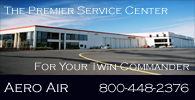 While flying a private plane to almost any destination in the world is somewhat routine, a U.S. pilot flying to Cuba must follow a certain set of more-restrictive rules because of the past relationship between the two countries. In this article I will share some of the details of a recent visit to Havana to illustrate the different aspects of flying to Cuba.
While flying a private plane to almost any destination in the world is somewhat routine, a U.S. pilot flying to Cuba must follow a certain set of more-restrictive rules because of the past relationship between the two countries. In this article I will share some of the details of a recent visit to Havana to illustrate the different aspects of flying to Cuba.
On departure day, participants met in Stuart, Florida, to prepare for our flight to the former forbidden land. After a detailed briefing provided at the Stuart Jet Center, each of the pilots cranked up their engines and we all lined up for takeoff and the exciting flight to Havana, Cuba’s Jose Marti Airport. It was a pretty easy flight—straight line distance of 310 nautical miles. It was slightly longer for us because we had to go across Florida to a waypoint called MAXIM, the entry point for Cuba airspace. Our flight lasted slightly more than one hour.
Air Journey secured the landing permits for us. Keep in mind that because Cuba technically is not open for tourism, you must follow one of the 12 categories set up by OFAC (Office of Foreign Asset Control, part of the U.S. Treasury Department). So, our umbrella category was the people-to-people approach, which basically was under the care of Air Journey and kept us very busy every day on the island.
The first sight of a Cuban runway is amazing—at 13,123 feet long, Marti’s Runway 06/24 obviously was built by the Russians some years ago. The controller had alerted us that, in addition to Havana International, there is a smaller airport to the northwest called Playa Baracoa and a larger military airport to the southeast —Managua—with a runway of the same length.
Communication was perfect, with English instructions. We had a clear runway and a taxiway in very good condition. After landing we were directed to a private parking area known as Terminal 5. A very efficient crew helped us enter the country. Jet fuel was made available at a cost of 47 cents a liter (about $1.78 per gallon), to be paid in cash.
Once we cleared customs and immigration, filled out the visa application, and secured medical insurance, we launched on three full days of Havana discovery, which included lunch and dinner at different paladares—privately-owned restaurants in local people’s homes. We also went to a Harley Davidson chop-shop where the owner explained to us, in good English, that because of the embargo he was fixing a 1950 Harley vintage model with parts and pistons taken off a Russian truck.
Our hotel overlooked the heart of Havana center, and was within walking distance of the capitol building and the National Theater.
The next day we had a full program including a visit to the old city of Havana, interaction with a local Cuba printmaker, and in the afternoon an excursion outside of Havana to visit Hemingway’s home, Finca Vigia. That evening we had dinner in Chansonnier, a very well-known paladare, and were then on our way to the world-famous Tropicana Club, which has been in operation since 1939.
The next day, our last full day, we visited a cigar factory to learn about the art of cigar-making. Then, of course, we had to sample a little bit of the local Cuban rum, and continue our tour of the museum of Bella artists, which is a Cuban collection that shows the development of Cuban painting.
Part of the afternoon was spent in Jaimanitas, home to the famous artist Jose Fuster and where he has used the area buildings and parks as his personal canvases.
Dinner was in a very nice paladare with some after-dinner cigar smoking before setting up to come back home.
This is a very fast and unique way to visit Havana, and we’re looking forward to our next visit. It will include additional destinations on the island such as Santiago de Cuba and Pinar del Rio.
Thierry Pouille is the founder of Air Journey (www.airjourney.com), which offers aircraft owners and pilots escorted and concierge tours of destinations around the world.




